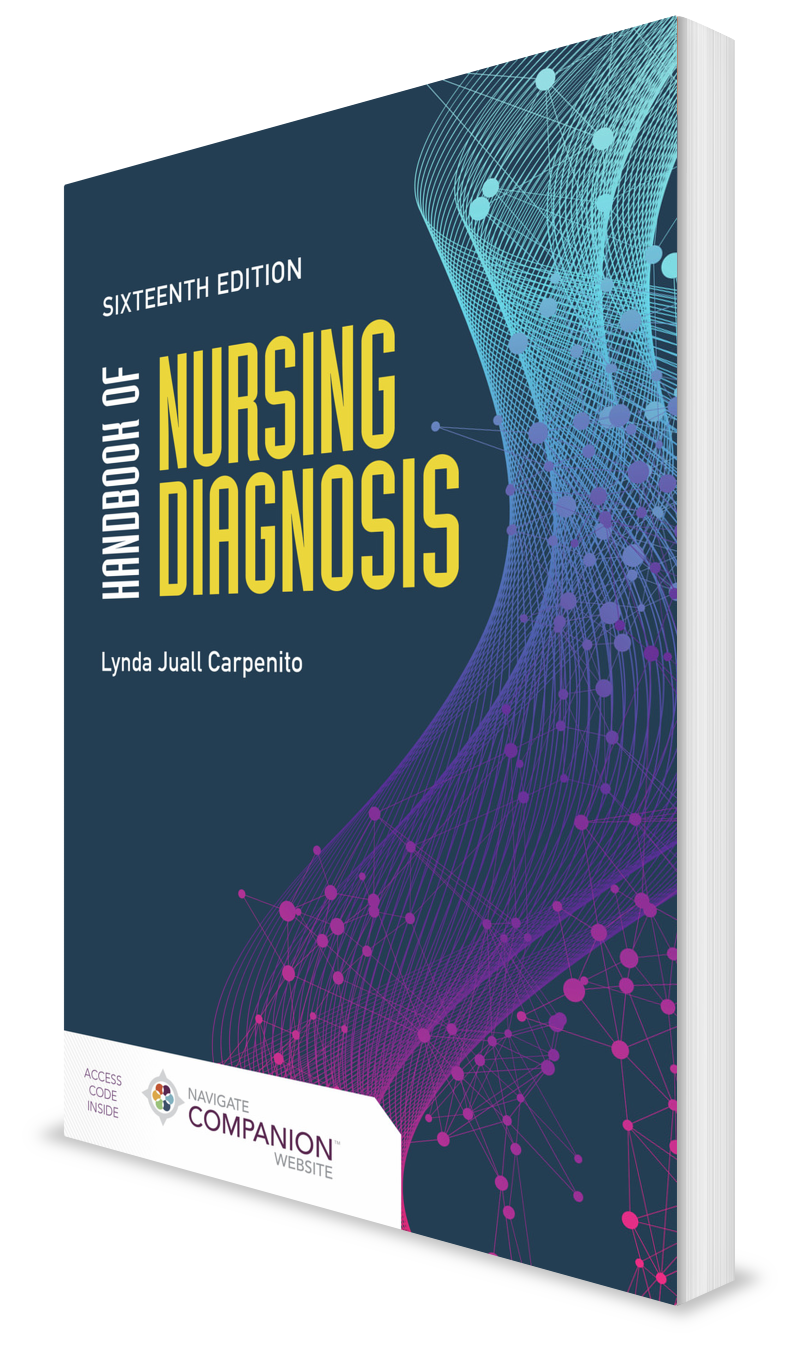Special Back-to-School Offer – Save 25% + Free Shipping on Today’s Order with Code STUDY25!
Excludes Uglys, mobile apps, online nursing courses, Junction Education, Cybersecurity, Medicine, and custom products. Cannot be combined with any other discounts. Ground shipping to contiguous U.S. states only. Expires 9/30/25. Other restrictions may apply.
Preparing Fundamental Nursing Students for Clinical Practice: Barriers & Strategies to Overcome

Clinical practicums are an essential element of learning for nursing students, as they enable the application of theoretical knowledge in a real environment. Clinical experiences allow for the application of technical skills through interaction with patients/significant others/healthcare workers. In addition, students are mentored into the role of an accountable, trustworthy, compassionate graduate nurse.
The average length of stay for a patient in U.S. hospitals is 5.9 days.
The complexity of the care related for individuals with acute medical or surgical conditions can negatively influence the fundamental students’ experience. They will need to analyze objective data (vital signs, physical assessment) and may feel nervous and overwhelmed due to their limited clinical knowledge and experience.
In addition, the growing nursing shortage has influenced the student’s learning environment. The U.S. Bureau of Labor Statistics’ projects 193,100 openings for registered nurses each year through 2032 when nurse retirements and workforce exits are factored into the number of nurses needed in the U.S. This makes nursing a very attractive career path for students because their skills and knowledge will be so high in demand. However, some nursing programs are limiting the number of students accepted due to a shortage of faculty.
How the Nursing Shortage Affects Nursing Students
Traditionally, faculty have expected staff nurses to mentor students, this is especially critical for fundamental students. Practicing technical skills in the school lab cannot compare to performing the skill on a patient. The patient may be in pain, afraid, depressed, or concerned of the competency of the student. With nurses feeling burned out, they may not be physically, mentally, or emotionally available to be an adequate mentor to students.
In response to the shortage of nurse mentors, faculty can evaluate in the pre-clinical planning session which situations require their presence versus when a staff nurse can mentor. Careful planning with guidance and follow-up by an instructor can ensure students are confidently honing their clinical judgement skills.
Care Plans in U.S. Heath Care Facilities
The Mayo Clinic in Rochester, Minnesota was the first large health care system to use in Electronic Medical Records (EMR) in the 1960s. By the 2000s Electronic Heath Records (EHR) became widely used in nursing. Care planning in health care facilities has evolved from hand-written plans of care to electronic care planning. Access to a care plan electronically is through specific health conditions (medical, surgical, mental health, OB-gynecology, pediatrics) in the electronic documentation systems.
One frequent criticism of standardized care plans is they are not individualized. It is important to initially examine the value of standardization. What is the advantage of having a nurse create a care plan on admission, when it is based on the medical or surgical condition, not the individual? Instead, there should be a method to communicate to the next nurse additional interventions, nursing diagnoses, or preferences that direct interventions that are warranted due to the assessments of the previous nurse assigned. For example, an individual scheduled for a hip replacement has diabetes mellitus, will also have Potential Complication: Hypo/hyperglycemia ** on their problem list.
** Collaborative problems are physiological complications that nurses monitor to detect onset or changes in status. Nurses manage collaborative problems utilizing physician /NP/PA prescribed and nursing prescribed interventions to minimize the complications of the event.
The primary role of faculty is to cultivate in students the thought: Are there other concerns the patient has that require attention while hospitalized?
For example, a woman is hospitalized after an automobile accident in which her son died. The nursing diagnosis “grieving related to death of her son in the same accident” would be added to their problem list. Most health care systems have a concise format that contains the current clinical data that is communicated at the change of shift, such as Kardex. Thus this nursing diagnosis would be communicated during shift report.
Handbook of Nursing Diagnosis, 16th Edition
Handbook of Nursing Diagnosis, 16th Edition, is the ideal quick reference for nursing diagnosis information. This trusted handbook covers the NANDA-I Nursing Diagnoses 2021-2023 and offers practical guidance on nursing diagnoses and associated care.
Request Your Digital Review CopyExpectations for Fundamental Students Clinically
The prime role of clinical instructors teaching fundamental students clinically is to provide opportunities for students to achieve comfort with their clinical hands-on skills and to always interact with patients and significant others with respect and empathy.
Faculty should be cautioned not to select or accept patient assignments that require care beyond the abilities of a fundamental student. That would also include a difficult or angry individual and/or family. The student will not benefit from this assignment.
Fundamental students are overwhelmed with anxiety related to many variables in the clinical setting. Examples include patients in pain, angry families, lack of knowledge and fear that they will harm someone with a mistake. Initially, faculty can pose this question to the clinical group: What are you most worried about?
Have the students write their fears down anonymously. The clinical instructor can then review their concerns with their group. This may be an opportunity for the students to realize that they all have fears. This also provides an opportunity to discuss that mistakes happen if the steps to prevent it were not adhered to. They must be reported and consider a teaching moment.
Fundamental students who are certified aides with competency in routine clinical procedures will need mentoring into a nursing role versus an aide. Too often their skill competency encourages faculty to overestimate their overall assessment and diagnosing ability. Challenge these students with assignments that require teaching as wound care, low salt diet or emotional support.
Staff often expected faculty to routinely assign students to individuals that require extensive hygiene activities. Some students may benefit with this assignment, however as competencies in routine hygiene care are achieved, other assignments may provide care opportunities beyond routine hygiene procedures. Faculty would be wise to alert the unit that these types of assignments will vary depending on the educational needs of the students.
This author created a rotating assignment, which entailed no physical care giving by the fundamental student that day. This assignment required the student to teach four patients content that directly related to their condition or a healthier lifestyle.
The students are given guidelines or directed to specific online sites. By creating this type of assignment, which entailed no physical care, the student can focus completely on teaching and tailor their teaching strategy to the person-comfort and assessing for understanding. The topics should not be complicated but instead focused on basic healthy choices, such as lowering fat intake, eating better, moving more, preventing falls, and reducing salt intake. A side benefit is that the student will be exposed to healthy choices for themselves.
Nursing Students and Standardized Care Plans
Criticism of standardized care plans reflecting care guided by illness is common in educational programs, but would you prefer nurses or students utilize their time writing the same initial care plan? I for one celebrate that the standard of care is an online document rather than requiring nurses or students to create them. There is no data to support that care plans created by a nurse are more clinically useful than standardized care plans. Standardized care plans represent the predictive care that is indicated due to a medical/surgical condition or a procedure. EHR have eliminated the repetitive writing of routine care plans by nurses.
Some clinical documentation systems allow for adding to the standardized document, with additions and deletions. Clinically, the care plans, regardless of the format, are usually not the document utilized to inform nurses of the patient status and changes in care at the change of shift. What is utilized is a document which reflects the present status of the individual with updated care data to support improvement or not and patient preferences. It can be referred as the Kardex and is formatted to add updates. This document is utilized at the change of shift or transfer of an individual from one unit to another.
Currently, hospitalized patients have limited length of stay, which translates to most patients requiring more nursing care. When possible, students and staff should receive assignments to same individuals during their hospital stay. This enables them to utilize personal data and preferences to improve the hospital experience and eliminate the unknown with each assignment.
Excellent, individualized, compassionate care can be provided with an excellent, caring nurse utilizing a standardized care plan.
What are the expectations of care planning for students? How are individualized care plans defined?
The expectation of fundamental students creating individualized care plans is
unrealistic. Most of these students are facing suffering individuals and family for the first time. They are overwhelmed with the technical skills and a real patient. No amount of practice in a lab can change that.
Fundamental students should be counseled that patients and family will say things to them that are disturbing and that they should then consult their instructor. The instructor should intervene with the patient or family with the student present. That is an excellent teaching moment.
Critical thinking for fundamental students is recognizing data that is problematic and reporting this data to the RN and their instructor. Of course, a student can only recognize deviations if they know what is normal. The expectation for fundamental students clinically should be to draw out caring behaviors, proficiency in technical skills and reporting concerns about subjective/objective data that they encounter.
Despite the availability of electronic health record systems, many nursing students are expected to create “individualized care plans” for their assigned individual patients. This assignment may be based on very limited or no assessment data collection by the student except knowledge of their medical diagnosis or surgical procedure.
The fundamental clinical experience is perhaps the most anxiety producing clinical in the nursing curriculum. Despite all the hands-on labs on the technical aspects of nursing care, the most anxiety producing events for students involve anticipation of performing a technical skill on a patient. This has not changed since this author was a fundamental BSN student. I now remember vividly decades later the first time I catharized a male patient. Nothing I read the night before about his condition, his medications etc. was a priority for me. I was so anxious. As I proceeded to catharize him with my clinical instructor next to me, he asked me “How do I compare to other men my age?”
The first weeks of the clinical experience for fundamental nursing students should be one of nurturing the student to become comfortable with the sights and sounds of individuals’ suffering and discomfort.
The care provided by the student can be directed by a Generic Medical or Surgical Standardized Care Plan *provided in the course materials or from the institution. An alternative is for the faculty to select Generic Medical and Surgical Care Plans from multiple online sites or as adjunct documents with Nursing Diagnosis or Nursing Care Plan books. There is no data to support the idea that assigning students the task of creating care plans will improve their knowledge. Nurse educators, armed with a proven nursing teaching plan and the right nursing care plan book, can help guide and support new nursing students by teaching them how to prepare thorough individualized care plans for optimal patient care.
As students progress in the nursing program, each clinical course will have Generic Standardized Care Plans for Pediatrics, Gynecology, Maternity, Orthopedics, General abdominal surgery. The student can access the care plan via their course materials, in the clinical facility, or from another designated online source.
Requiring students to create generic care plans is an unnecessary activity.
For fundamental students, the students can be instructed to delete from the standardized plan. It is highly unlikely that a fundamental student would have much to add to a standardized plan. Providing individualized care is a learned precious quality that instructors can role-model and cultivate in students.
Should the assigned patient have a co-morbidity of diabetes mellitus, then the fundamental student will advise to add blood glucose monitoring to the
assessments and care plan. The collaborative problem** > Potential Complication: Hypo/hyperglycemia would be added to the standardized plan. However, the fundamental student should not be expected to assume the other interventions as providing diabetic teaching.
Students in clinical courses post fundamentals, will be advised that while caring for an individual utilizing the generic care plan, that they can add and delete to the care plan based on their assessments during care. This can then be submitted to the instructor.
When I was a clinical instructor, I actively sought out clinical experiences for students even though they may have been more appropriate for a different level student, such as pressure injury wound care. My intentions were admirable but misguided. In retrospect, I have come to question this practice. Did the unprepared student gain knowledge and self-confidence or the opposite, frustration and self- doubt when assigned an individual with care needs beyond the their level? If a unit nurse closely works with the student, then most assignments can be excellent learning experiences. Unfortunately, staff shortages impede this.
As the student progresses to the next clinical course, the care outlined in the generic plans will always be expected, for example: Risk for Infection, Risk for Falls, Anxiety. Should an individual have risk factors that increase their risk for falls then the individual’s problem list would have the addition of high risk for Falls or for a car accident survivor, whose son died in the accident, would have a Grieving nursing diagnosis added on to her problem list. This would alert all caregivers to her situation.
As the student gains more clinical experiences beyond the first clinical course, additional significant data assessed during the care giving period by the student may prompt a change in the plan, e.g. additions, deletions. The student would note the data and plan revisions in the post care evaluation section on the plan of care to submit to their instructor. The student should also alert the staff nurse of the significant data to be added to the agency plan or Kardex.
About the Author:
Lynda Juall Carpenito, MSN, APN, FNI, is the author of several nursing and health care textbooks on nursing process, nursing diagnosis, care planning and documentation and clinical teaching. She is a family nurse practitioner based in Mt. Laurel, New Jersey, and the president of LJC Consultants.
